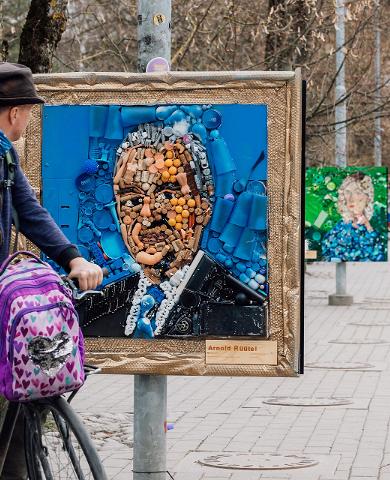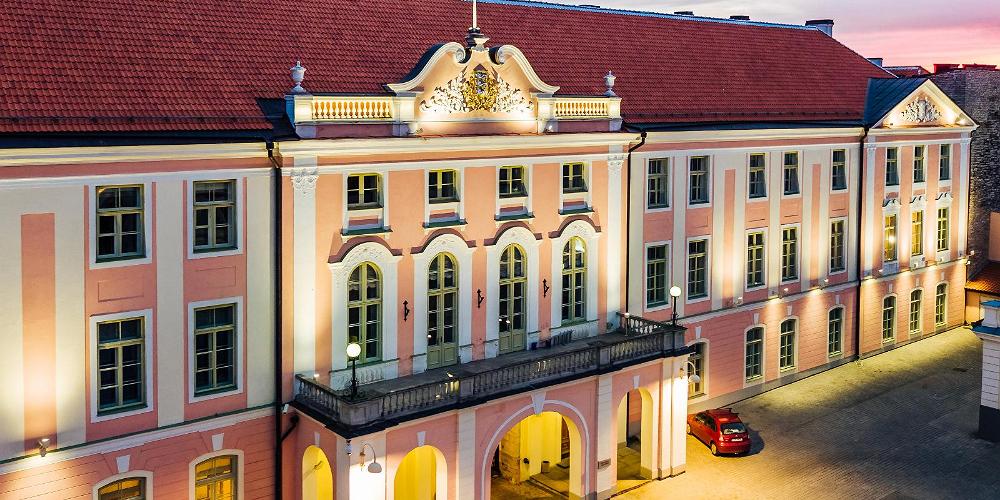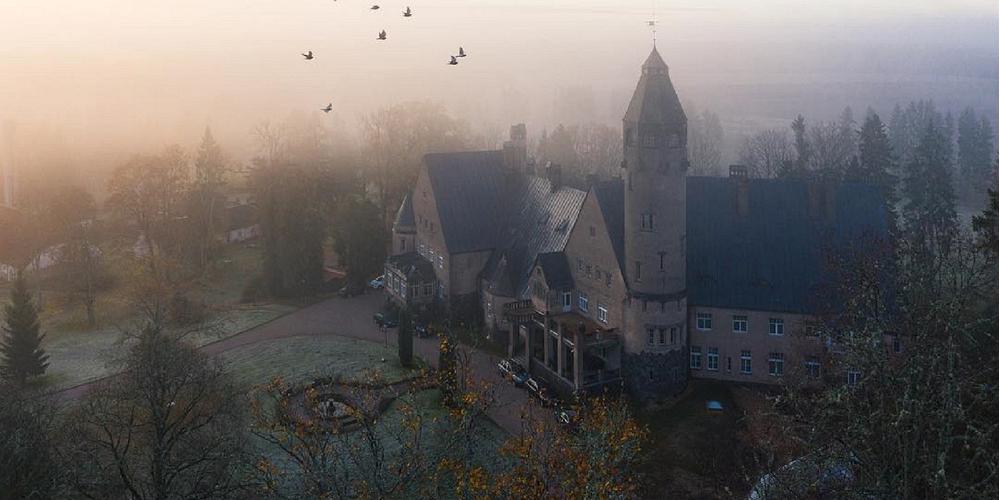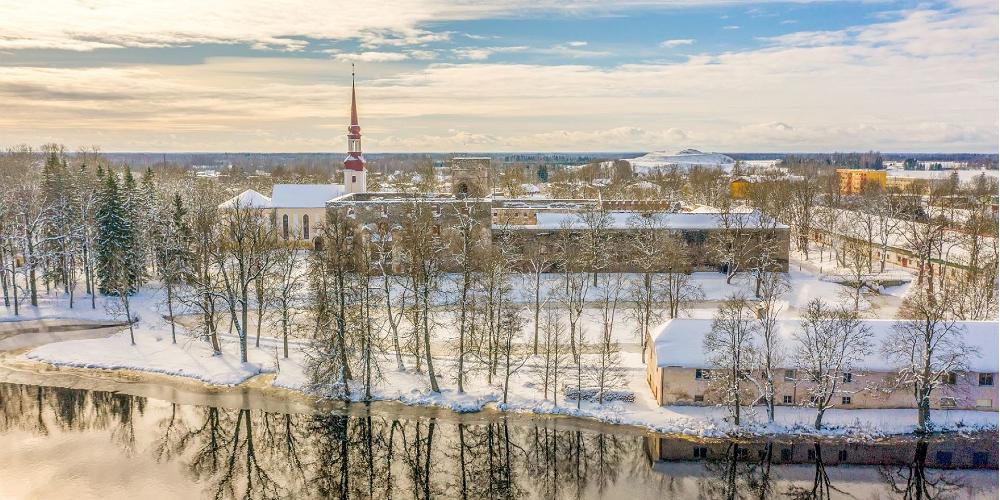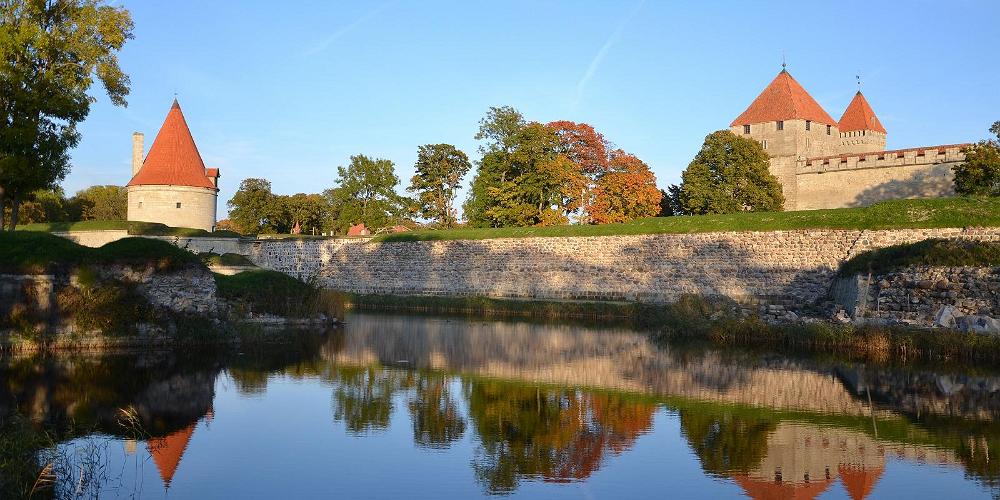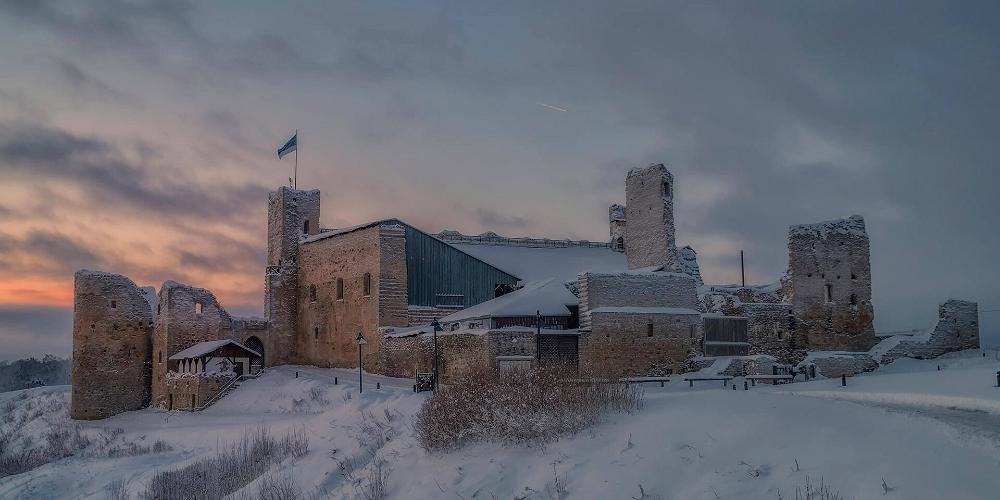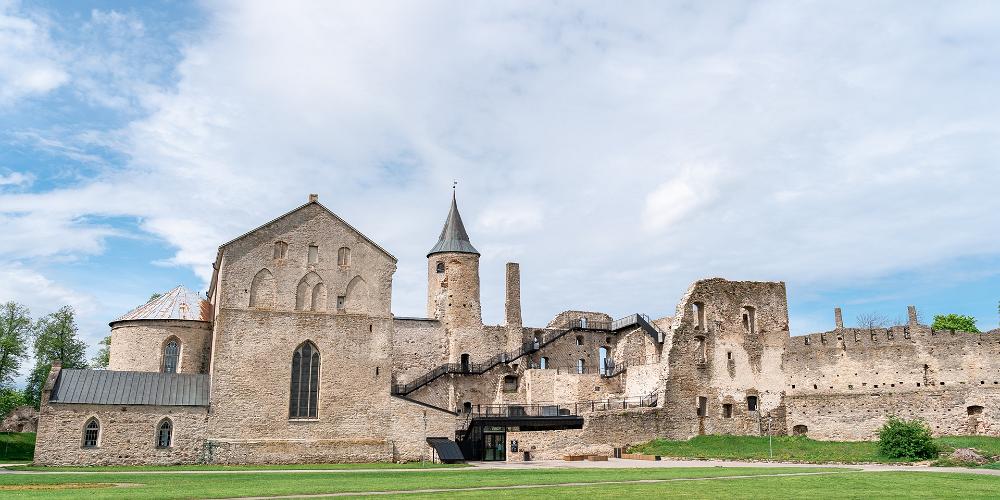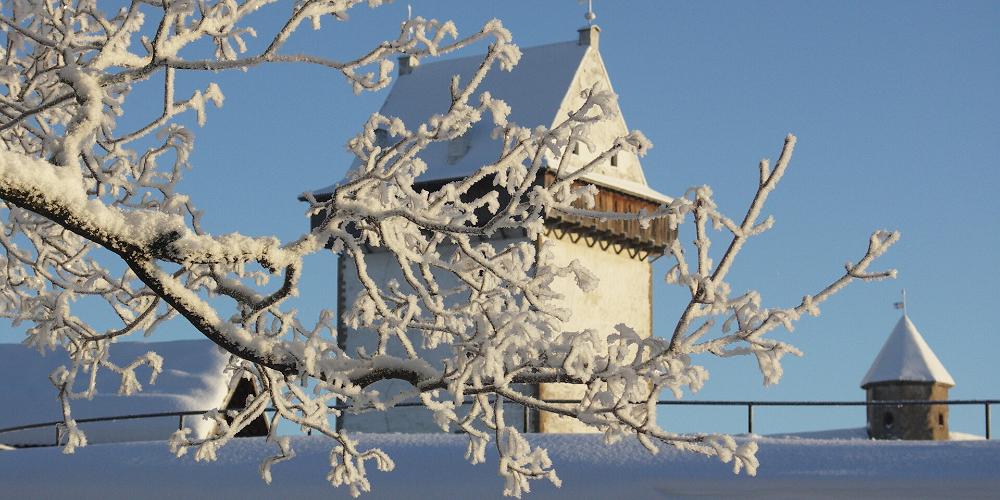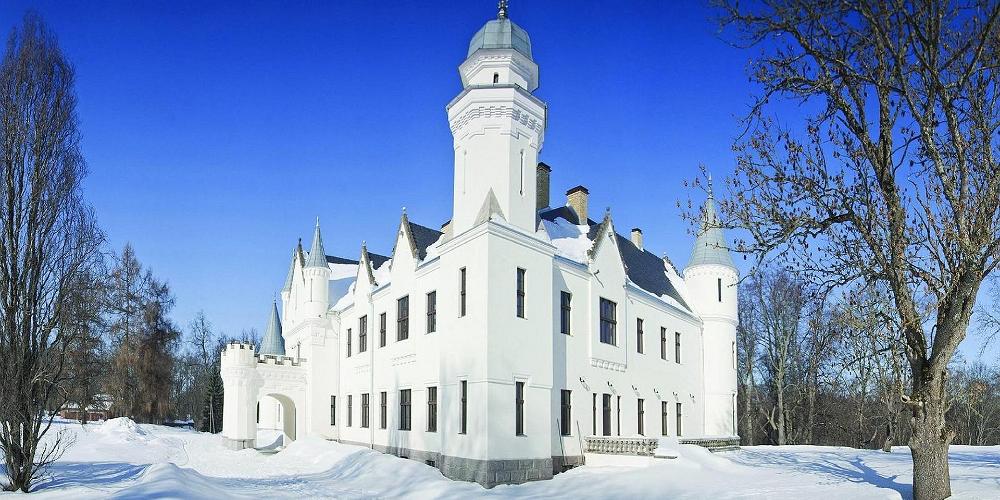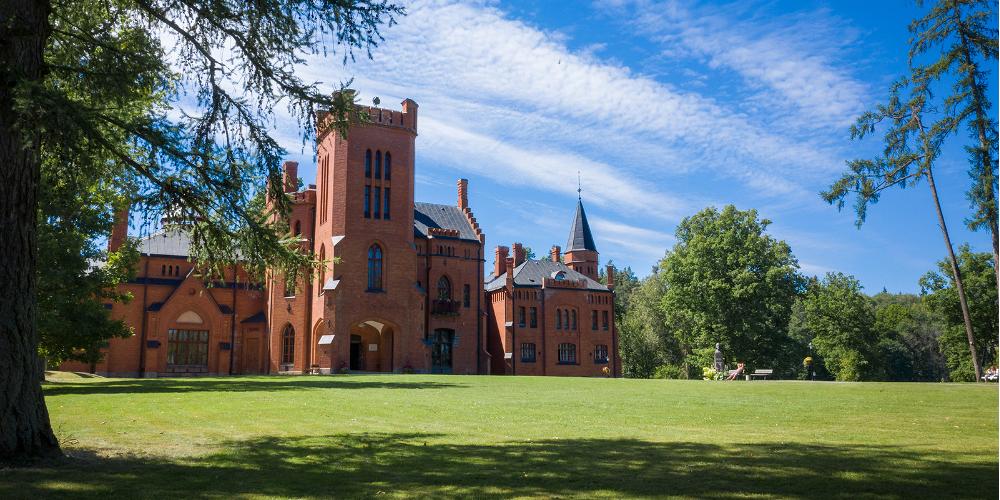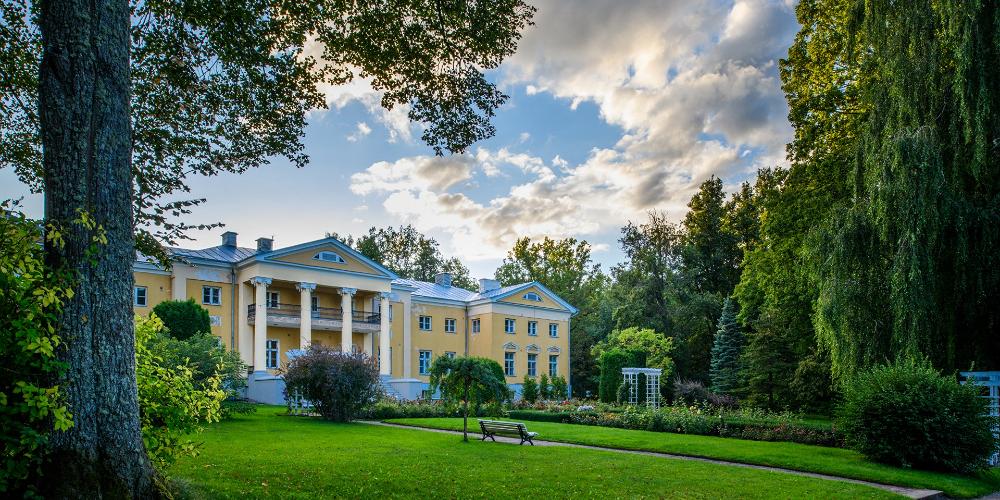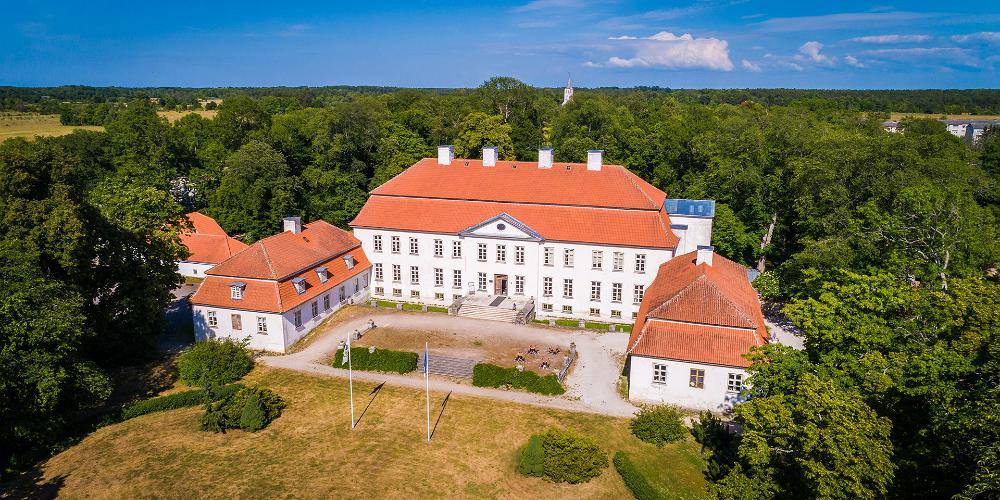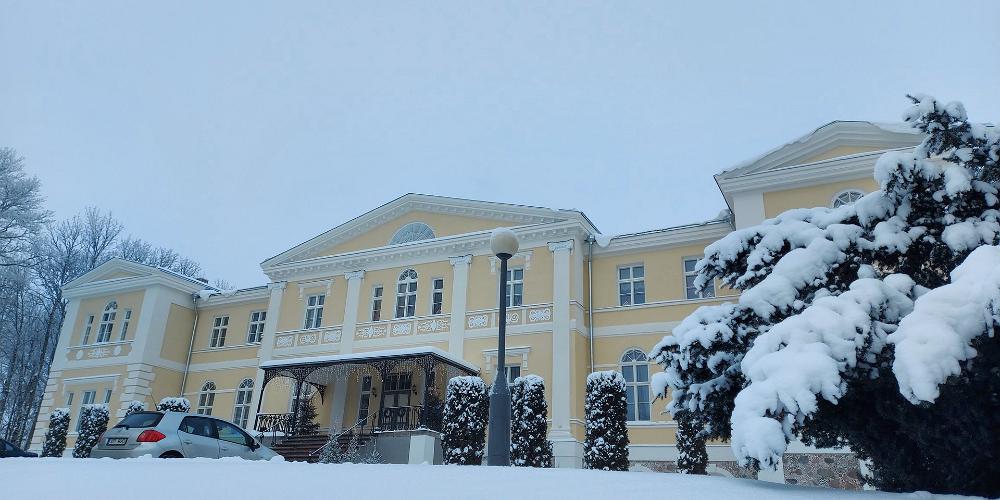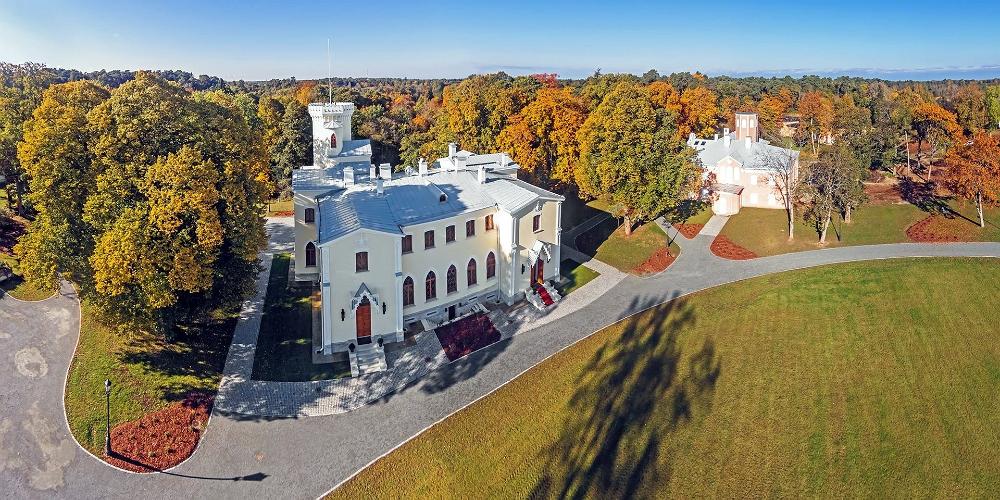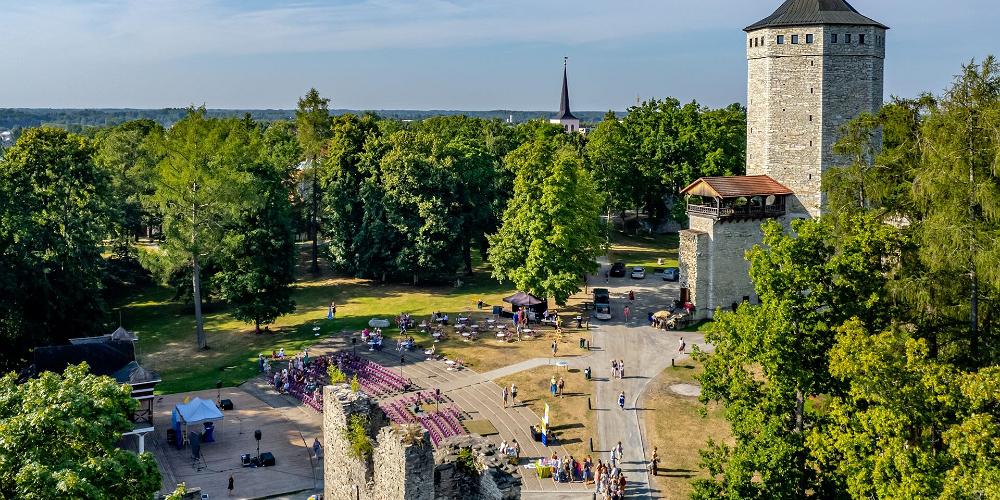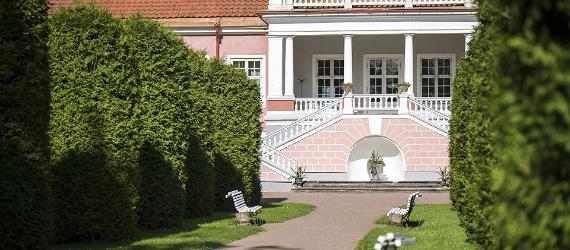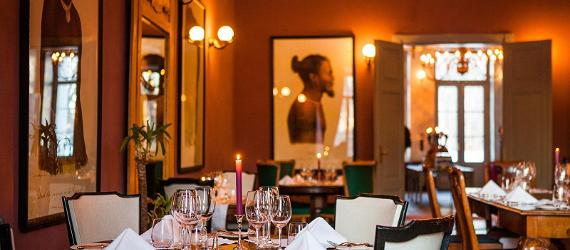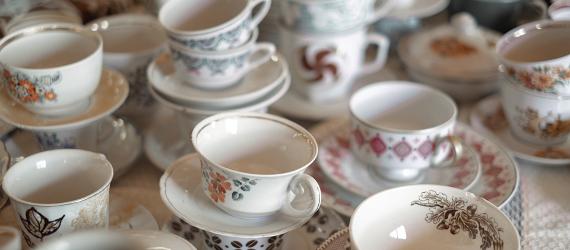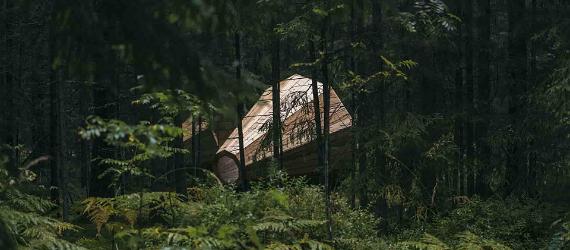Castles in Estonia were once home to Danish, Swedish, German, and Russian regents and landowners. Apart from Toompea Castle, which is now home to the Estonian parliament, most are now museums, luxury hotels, or rental spaces. You'll find some of these castles are included on the Museum Card, which also gives you access to over a hundred other museums all around Estonia. If you long for a taste of royal life, check out the list below for the castles in Estonia worth visiting!
Toompea Castle was erected on the foundations of the crumbling eastern wing of the fortress built on this site in the 13th and 14th centuries. The castle with its late Baroque façade was built between 1767 and 1773. The history of Toompea is the story of the rulers and conquerors of Estonia, each of whom moulded and reinforced the place to their own needs and according to their own taste. Today the castle is home to the Riigikogu (the Estonian parliament). The blue, black and white of the national flag can be seen flying on top of the 45.6-metre Tall Hermann tower as the symbol of Estonia's independence. Free excursions of the castle for single visitors, as well as groups take place every day from Monday to Friday if booked ahead of time. Sessions of parliament can be watched from the public gallery.
Read moreTaagepera Castle is a special place – it is a mixture of elegant and rustic milieus, history, and the present. Baron Hugo von Stryk had the impressive art nouveau castle built as a home for himself more than a hundred years ago. The renewed castle complex is a unique conservation area with an art nouveau castle, an à la carte restaurant, a luxorious castle spa, a hotel in the style of the 1930s, and sports and leisure facilities. Come alone or bring your family and enjoy the milieu, peace, silence, massages, à la carte restaurant, a sauna, healing fresh air, and endless experiences that will guarantee that you will leave with a restored peace of mind.
Read moreThe stone fortress was constructed on the banks of the Põltsamaa River already in 1272. Later on (1570–1578) the fortress was the residence of Livonia's King Magnus. Repeatedly pillaged, the castle was rebuilt by Woldemar Johann von Lauw. In the 18th century the fortress became a grand rococo-style palace. The castle and the church burnt down in 1941. Only the church was restored in 1952. The castle remained in ruins, waiting for its time. The complex is open again from the summer of 2023. The castle tower, convent building, and gate building are open to visitors, where you can find a magnificent exposition introducing the history of the castle. From the observation platform in the castle tower, a view of the city opens up to those who bought the ticket. Craft workshops and a restaurant operate in the castle yard.
Read moreKadriorg Palace was founded by Russian Tsar Peter I in 1718. The palace was named Kadriorg (Katharinenthal in German) in honour of his wife Catherine I. The palace designed by Italian architect Nicola Michetti with its magnificent main hall is one of the most beautiful examples of Baroque architecture in Estonia and in Northern Europe as a whole. The lovely Roman Baroque palace is surrounded by a garden of fountains, hedges, and flowerbeds, modelled on Versailles. Good to know: the Palace houses the Kadriorg Art Museum, which exhibits the Estonian Art Museum’s collection of foreign art – Western European and Russian art from the sixteenth to the twentieth century.
Read moreKuressaare Episcopal Castle, also known as Kuressaare Castle, is one of the most interesting and best-preserved fortresses in Estonia. While built during the 14th–19th century, the castle became one of the most remarkable buildings in Northern Europe. There is a history museum in the castle that tells stories of the distant past and of the recent history of Saaremaa and its locals through permanent and travelling exhibitions. There are activities for children and adults – from treasure hunts to archery! Look at the virtual tour of the castle and the castle yard here.
Read moreThe castle in Rakvere offers a lot of excitement for the entire family! When you enter the castle, you will find yourself in a theme park representing the everyday life of the 16th century. There, both young and old visitors can spend an exciting day as they dress up as knights and warriors, enjoy various entertainers, and learn a thing or two about the life of people in the Middle Ages and the early modern period. Additionally, there is a wine cellar, a torture chamber, a death room and a hell, a Red Lanterns Street, a medieval brothel, a barber's shop, and an alchemist's workshop. Shenkenberg Tavern, which is located in the stronghold, offers meals made after medieval recipes.
Read moreHaapsalu Castle is an architectural gem built in the 13th century that was the seat of power of the local authorities until the end of the 17th century. It is one of the best-preserved castles in Estonia and home to the most famous ghost in Estonia – the White Lady! There is a museum on medieval history in the main castle, through which you can also access the southern cathedral, first mentioned in writing in 1279. There is a children’s playground inspired by the Middle Ages in the moat. You can visit the courtyard for free, but you have to buy a ticket to get to the museum.
Read moreNarva Castle is one of the main attractions of the city. In the seventh decade of the 13th century, the Danes established the castle as a residence for the Danish King’s Vice-regent. Narva Castle is the most diverse and best-preserved defence structure in entire Estonia. The area of the castle is 3.2 hectares, and its highest point is the Tall Hermann Tower (51 metres). Today you can visit the museum in the castle, where the displays explain the history of Narva and the castle. There are handicraft workshops in the northern yard, where you can try your hand at various techniques and handicrafts.
Read moreA magical castle on the eastern border of Estonia is waiting for you! Here, you can get acquainted with the life and history of an aristocratic family and meet the various servants who worked in the manor a century ago. The tour guides of the castle know countless stories; you can also make your own souvenirs. In order to see the entire exposition spanning three floors, you should set aside at least one and a half hours. From the summer of 2022, you can also visit the riding horses stables of the castle with a new exhibition on how the manor was managed. Alatskivi Castle and the Onion Road represent one of the areas of Southern Estonia worth discovering through the bright yellow National Geographic windows.
Read moreSangaste Castle is one of the 21 Southern Estonian places worth discovering that are marked with a yellow National Geographic window. If you are interested in culture and history, it is definitely worth a visit. Sangaste castle and park were fashioned after the famous Windsor castle in England. The magnificent halls, architecture and history of the castle make this a good place for a big wedding, get-togethers or spending the night in a genuine castle. The castle restaurant serves local food and real rye vodka made from Sangaste rye. In addition to the castle, the stables, dairy, barn, water tower and arboretum are also open for visitors.
Read more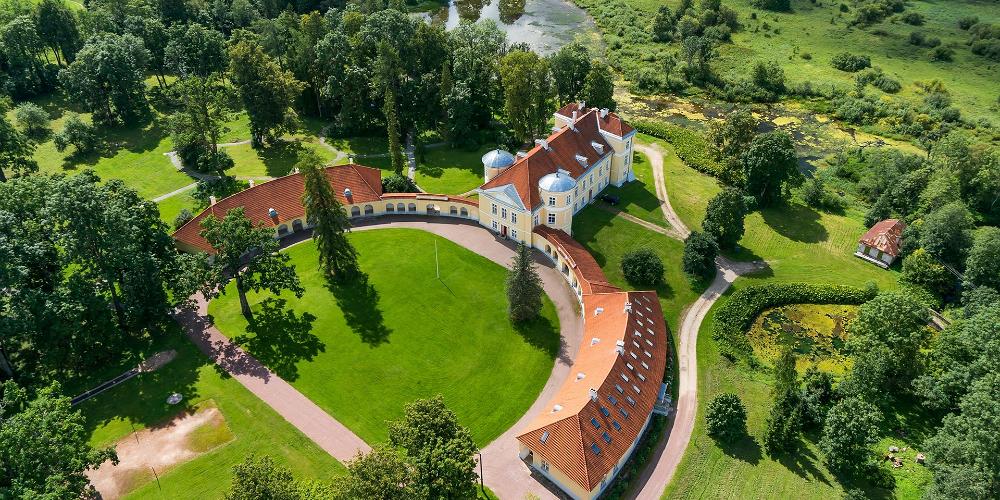
Kiltsi castle
Lääne-Viru maakond, Liivaküla
Kiltsi castle was erected on the ruins of a vassal fortress dating from the 15th–16th centuries. The main building that stands today was completed under the aegis of H. J. von Benckendorff in 1790. During the 19th century the castle was owned by the von Krusenstern family. It was under Adam Johann von Krusenstern’s leadership that the first Russian round-the-world trip was undertaken (1803–1806), on the basis of which he compiled his Atlas of the South Sea while living at Kiltsi. The Admiral room was opened at the castle in 1995 in his memory. Today you can visit the tower of the castle, where there is an exhibition on the lives of von Krusenstern, his son Paul and his grandson Otto Paul. Good to know: the mansion can be rented for celebrating birthdays and weddings, organizing trainings and seminars, and in summer you have the opportunity to visit the mansion under the project Unustatud Mõisad.
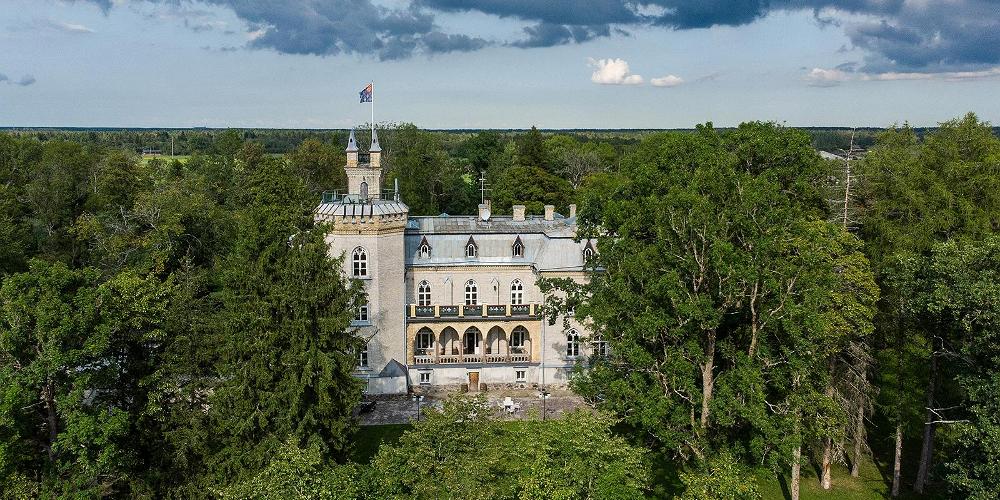
Laitse Castle
Harju maakond, Laitse küla
Laitse manor resembles a medieval knight’s castle. Built by Woldemar von Uexküll in 1892, it's one of the best works in the local neo-Gothic style. During the years of the Republic of Estonia, the interior of the castle was completely reconstructed. The castle's interior has a romantic character that you'll see in guest rooms, seminar rooms, and the restaurant. Laitse Castle is also an ideal place for weddings. A dome-shaped labyrinth garden has been planted next to the castle, consisting of a little over one thousand thuja plants.
Räpina Mäemõisa Manor House, also known as Sillapää Castle representing the Late Classical style was built in the middle of the 19th century. The centre and annexes of the original building had two storeys which were connected with one-storey galleries. The rear of the building is decorated by four Ionic columns with triangular pediment portico. In 1924 the predecessor of the gardening school started its activities in the building. During 1937-1938 the castle was reconstructed as a fully two-storey building. Today the Manor House accommodates the Räpina Local Lore and Gardening Museum, the Räpina Music School and the Räpina Folk School.
Read moreThe baroque Suuremõisa castle was constructed between 1755 and 1760, commissioned by Countess Ebba-Margaretha von Stenbock (née De la Gardie). Count Jacob Pontus Stenbock, who inherited the estate from his mother the Countess, exchanged it in 1796 for Uuemõisa manor due to his debts. The new owner of Suuremõisa was Otto Reinhold Ludvig von Ungern-Sternberg. The castle has a museum room introducing the history of the manor, as well as a souvenir and book counter. In addition to beautiful interior and history, the surrounding area of the manor features a flower garden created by Hiiumaa Vocational School, an English park, and various ancillary buildings of the manor complex.
Read moreKuremaa Classicist manor house was built in 1837-1843 by the von Oettingen family. The manor house was designed by the architect E. J. T. Strauss from Tartu. There is also a room for a museum in the castle which gives an overview of the region and of the history of Kuremaa Agricultural School. At present the rooms of the castle are used for organising conferences. The park rich in species descends towards lake Kuremaa which attracts visitors with its well-kept beach and possibilities for taking a rest.
Read moreThis manor complex was built in 1833 in the neo-gothic style according to the designs of Hans von Stackenschneider, who would go on to become one of the key minds of the historicist style in Russia. The manor has an amazing location along a rocky river with rapids that run through the valley, a 6 m waterfall, and wonderful views of the surrounding countryside. The museum and exhibition room welcome visitors every day. We offer guided tours and rent rooms for diferent events. Restaurant Schloss Fall takes care of providing delicious meals. Did you know...? *The anthem of the Russian Empire "God Save the Tsar!" was first performed for Tsar Nicholas I by its composer Aleksei Lvov at Keila-Joa. The manor belongs to the National Registry of Cultural Monuments.
Read moreThe construction of the Paide Order Castle began in 1265 using local white limestone. The first building on Vallimägi Hill was the octagonal Tall Hermann Tower, which was destroyed by the retreating Red Army in 1941. The tower was restored for the 650th anniversary of the St George's Night Uprising in 1993. Interesting facts: The stronghold established in Paide was the second castle built by the order in the territory of Estonia after Viljandi. Paide Vallitorn became the symbol of Paide Town and Järva County and is depicted on their coats of arms. There is a memorial on Paide Vallimägi Hill to the four Estonian elders executed during the uprising.
Read more





